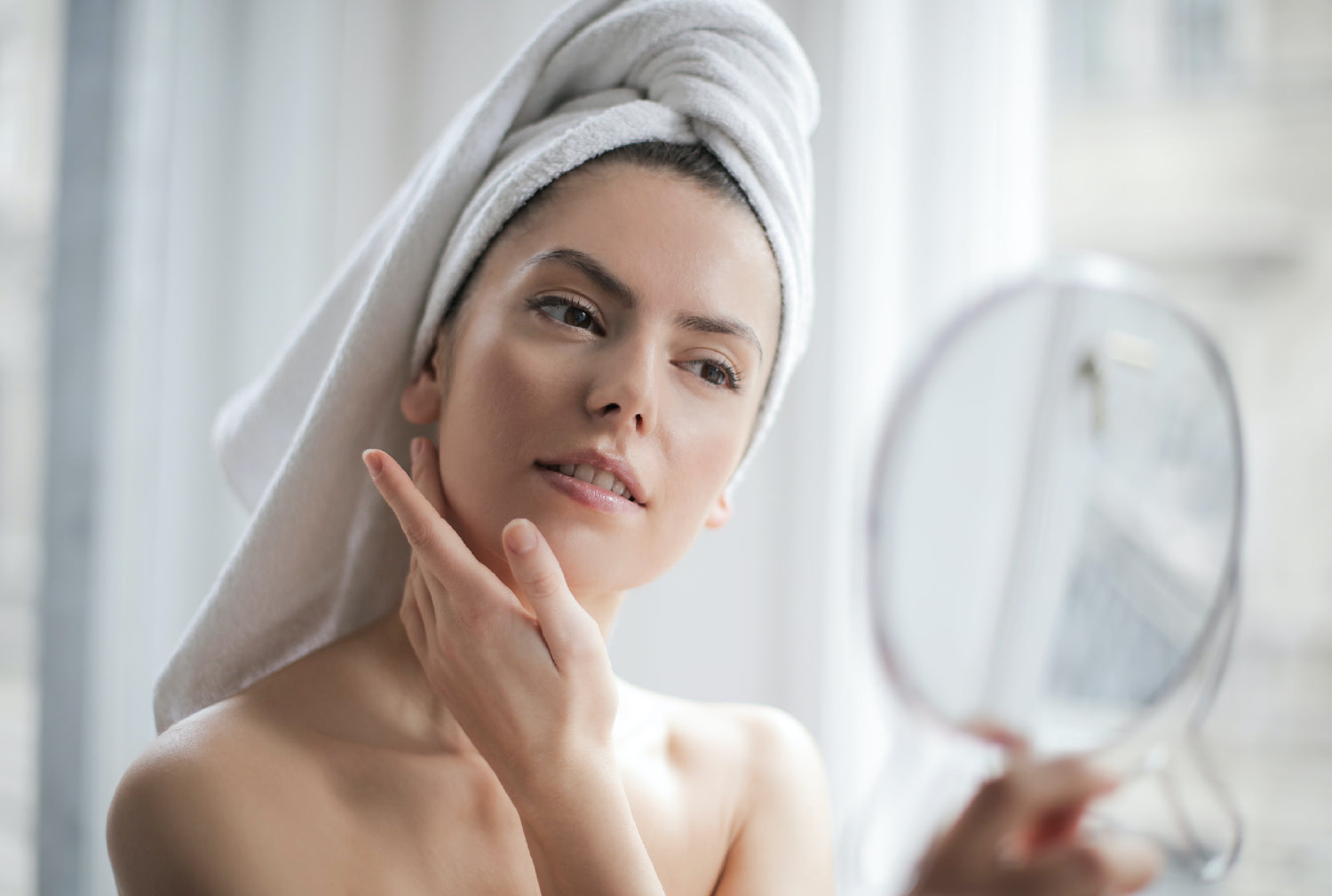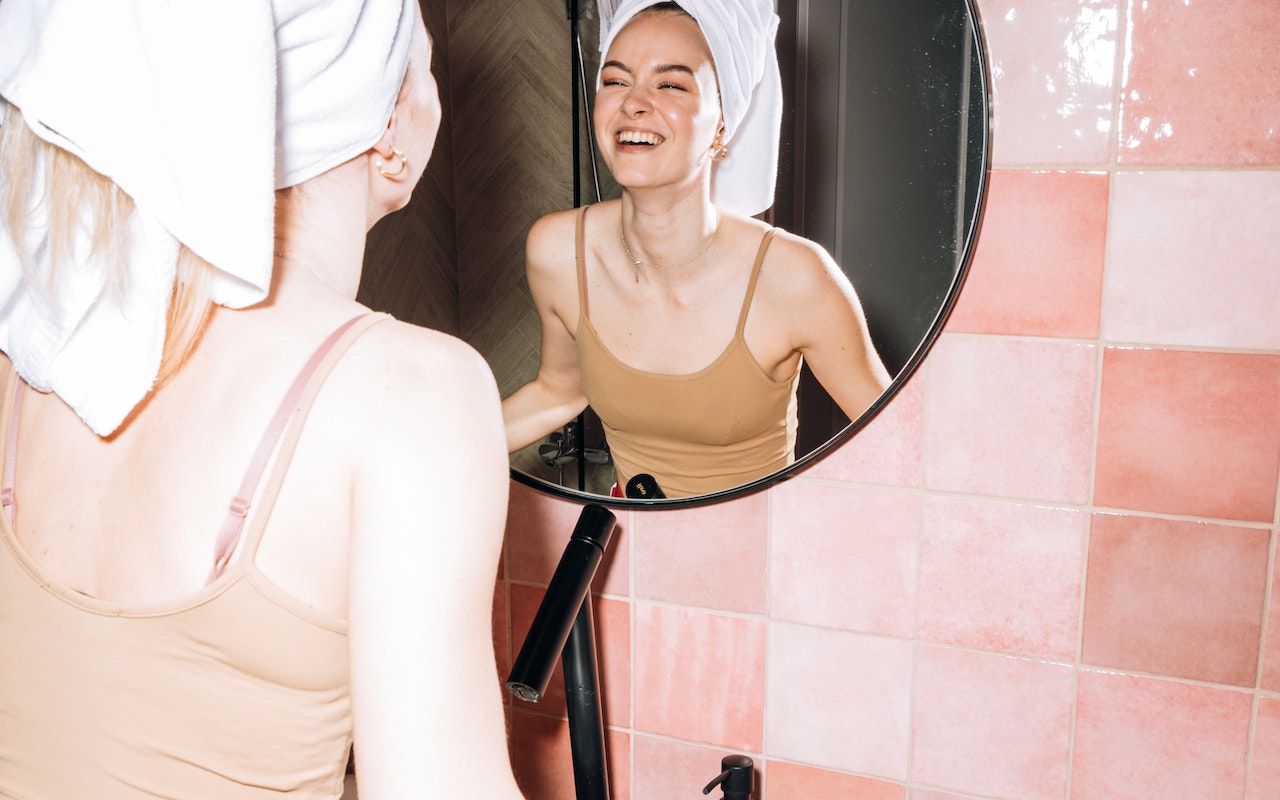Medically Reviewed by Dr. Lisa Hartford, MD
Microcurrent therapy has been gaining momentum in the cosmetology field as a nonsurgical treatment for common age-related skin concerns, such as fine lines, sagging skin, and loss of collagen. “I love microcurrent and have seen results with tightening and toning of the skin, specifically with muscles, and giving you a contoured look and a lifted face,” says California-based skincare expert and licensed medical aesthetician Cassandra Bankson. Although microcurrent originally targeted other body parts to decrease inflammation, pain, and muscle spasms, it has shown impressive anti-aging results when applied on the face which led to increased interest in this muscle-stimulating technique. In fact, the global microcurrent facial market size is estimated at $372.9 million only in 2022 and is expected to expand at a CAGR (compound annual growth rate) of 7.3% from 2023 to 2030, according to a report published by the Grand View Research. The increased interest in anti-aging treatments and the social media branding about the effects of microcurrent therapy are two factors that are expected to substantially boost the global microcurrent market size in the future. In this guide, we will delve into everything you need to know about the promising microcurrent therapy, including the science behind it, its evolution throughout history, its safety level and effectiveness, the difference between in-clinic and at-home therapy, and the best way to maximize the anti-aging results of muscle stimulation.
Microcurrent Therapy: Training Facial Muscles for An Effortless Sculpted Face
Microcurrent therapy falls under the category of non-invasive aesthetic procedures, which are generally preferred over surgical procedures for the multiple advantages they offer, including more comfort and less pain, little to no surgical wounds, fewer complications, relatively quicker wound healing, shorter downtime, and sometimes more satisfying outcomes. Microcurrent is a cosmetic treatment that does not require any surgical intervention since it only uses a low level of electrical current that imitates the natural current in the human body, helping to reduce the appearance of fine lines and wrinkles, firming up sagging skin, and enhancing the overall texture of the skin. “Microcurrent is shooting microcurrents of electricity into the skin, basically stimulating muscles,” Bankson explains, adding that the treatment is marketed as a painless method that can yield desirable skin repair and rejuvenation outcomes, such as tightening and lifting the skin and even stimulating collagen and reversing wrinkles. The claims of these brands and companies are packed with scientific evidence, as according to several studies, Microcurrent Electrical Neuromuscular Stimulation (MENS) can speed up the repair and recovery process of injured soft tissues. One study that aimed to test how microcurrent electrical neuromuscular stimulation can help in the regeneration of injured skeletal muscle in mice found that MENS noticeably facilitated this process by stimulating the proliferative potential of muscle satellite cells. In simpler terms, microcurrent was proven to be beneficial in repairing the aging skeletal muscle, which is one of the most age-sensitive tissues in the body that gradually loses its mass strength and capacity for regeneration, a syndrome known as sarcopenia that starts as early as the 4th decade of life.
Microcurrent Throughout History & Battle To Gain FDA’s Approval
The origins of microcurrent therapy trace back nearly five decades when the fifth-generation Chinese Doctor Thomas W. Wing introduced the first microcurrent instrument in history. Following that, former President Nixon's visit to Beijing, China in 1972 resulted in a growing interest in acupuncture as a beneficial medical modality. All types of acupuncture quickly became a hot topic that gained the interest of a plethora of physicians, among the most widely used methods was creating a stronger and more effective acupuncture application by adding current to the acupuncture needles. However, this method turned out to be uncomfortable for the treated patients due to the intense stinging they felt, leading some members of Dr. Wing’s study group to think about a less painful method to use electrical acupuncture. With some knowledge of the science and application of electrical current, Dr. Wing was able to undertake the task of finding a more comfortable way to treat patients while still gaining the benefits of electrical acupuncture.
The diagnostic current was accredited to German physician Dr. Reinhold Voll (1909-1989), who also featured the GSR (Galvanic Skin Response) in his own electro-acupuncture instruments in the late 1950s which was later called EAV (Electrical Acupuncture by Voll). The Chinese and ancient Egyptians employed a system of treating ear points that related the points to certain body parts and organs. This system was later used by Dr. Voll and then developed in 1951 by the French physician, Dr. Paul Nogier. The ear charts that Dr. Nogier created reflect more than two hundred points, while the Chinese ear charts are numerically simpler, reflecting only 130 points. Dr. Voll attempted to reflect as many points as possible through his EAV devices and the end result was a device able to reflect around 850 points, with the first diagnostic scales initially reading from 0-1000 and then being reduced to 0-100 in the 70s.
This diagnostic feature was later used by Dr. Wing, who lowered the voltage on his unit, adjusted the current levels to the micro amperage range, and added a wide range of extremely low frequencies. Then in 1975, the doctor succeeded in introducing what was being celebrated as the 1st comfortable non-needle acupuncture (Surface Electrical Acupuncture) instrument with diagnostics made in the United States, prompting many physicians to learn more about his instruments and the impressive results that occurred among treated patients. However, the FDA decided in 1978 that the acupuncture had not been “proven safe and effective” during a one-year period of experiments. Dr. Wing then revamped his instrument to align with the 1976 Medical Device and Cosmetology Act, building a novel model in 1980 that was shown to be effective in stimulating muscles. This new instrument was both safe and effective and was approved as a muscle simulator and even employed in the aesthetic field as a non-invasive method for reducing fine lines and wrinkles and toning the face. Finally, microcurrent therapy gained worldwide recognition after athletes like Joan Benoit and Carl Lewis started using it for muscle stimulation and referred to it as the latest and greatest physical therapy treatment.
Professional Microcurrent Facials vs. At-Home Devices: Which Is More Effective?
Just like other novel skin-care treatments, microcurrent therapy made its way out of aestheticians' offices to the homes of non-professional individuals, with lots of handy microcurrent devices being made available for everyone to safely and easily use. Although professional microcurrent facials are commonly believed to be more effective than using an at-home microcurrent device, Bankson provides her own “unpopular aesthetician opinion” in this regard. She says that if the patients are getting microcurrent for other areas on the body rather than their face, then it is highly recommended to go to a clinic and have the treatment done by a licensed professional. On the other hand, for those who seek to gain the anti-aging benefits of microcurrent therapy, she says that at-home microcurrent devices would be a more practical and effective option in this case. “If you’re getting microcurrent because you want to de-puff or to lift, you are probably going to pay $50-$150 for a facial, and you are going to have microcurrent along with that. But in order for microcurrent to work you need to use it over time,” she explains. “A lot of aestheticians or practitioners will book people 6-12 sessions. That is great for the person who’s providing the service because it is going to cost a lot of money but for the person who is actually getting the treatment, it lasts the day that you do it. But if you are trying to build muscles over time, think about going to the gym, you don’t just go to the gym once and then never go again for the next two months. You want to do a little bit every day or five days a week to actually see results, and that is how I see microcurrent at home, if you do some of this at home every single day, you are getting more of those benefits rather than just going in for an extreme session once or twice a month.”
In order to gain the promised anti-aging benefits of at-home microcurrent beauty devices, it is crucial that you pick a clinical-grade, FDA-registered device that is safe for all skin types. EvenSkyn® Phoenix face lifting microcurrent bar is a prime example of a handy and effective at-home microcurrent device, featuring cutting-edge solar and artificial light technologies that produce a moderated microcurrent to firm up sagging skin, improve blood circulation, and enhance skin texture and firmness within only 4-5 weeks of regular use.
Bonus Benefit of Microcurrent Therapy (For Those with Bad Botox)
While microcurrent therapy is mainly used to tone sagging skin and reverse other signs of aging, licensed aesthetician Bankson suggests that microcurrent has the additional benefit of mitigating “bad Botox” in the face. “Think about it, Botox is used to prevent your muscles from moving and being able to make expressions.” As a result, facial muscle stimulation can help reduce the visible effects of Botox that was done incorrectly. “For example, if you’ve got a Spock brow or the Botox was just terrible, using microcurrent can actually help reverse that, getting your face back to normal faster.” Nevertheless, she advises those who already had Botox injected in their face to to use microcurrent only on the areas on their face where they don’t have Botox, otherwise, it could “wear off quicker.”
References:
Distefano G, Goodpaster BH. Effects of Exercise and Aging on Skeletal Muscle. Cold Spring Harb Perspect Med. 2018 Mar 1;8(3):a029785. doi: 10.1101/cshperspect.a029785. PMID: 28432116; PMCID: PMC5830901.
Kolimechkov S, Seijo M, Swaine I, Thirkell J, Colado JC, Naclerio F. Physiological effects of microcurrent and its application for maximising acute responses and chronic adaptations to exercise. Eur J Appl Physiol. 2023 Mar;123(3):451-465. doi: 10.1007/s00421-022-05097-w. Epub 2022 Nov 18. PMID: 36399190; PMCID: PMC9941239.
Lu DP, Lu GP. An Historical Review and Perspective on the Impact of Acupuncture on U.S. Medicine and Society. Med Acupunct. 2013 Oct;25(5):311-316. doi: 10.1089/acu.2012.0921. PMID: 24761180; PMCID: PMC3796320.
Walston JD. Sarcopenia in older adults. Curr Opin Rheumatol. 2012 Nov;24(6):623-7. doi: 10.1097/BOR.0b013e328358d59b. PMID: 22955023; PMCID: PMC4066461.
Xu X, Zhang H, Yan Y, Wang J, Guo L. Effects of electrical stimulation on skin surface. Acta Mech Sin. 2021;37(12):1843-1871. doi: 10.1007/s10409-020-01026-2. Epub 2021 Feb 6. PMID: 33584001; PMCID: PMC7866966.









Leave a comment
All comments are moderated before being published.
This site is protected by hCaptcha and the hCaptcha Privacy Policy and Terms of Service apply.